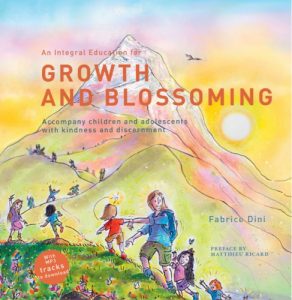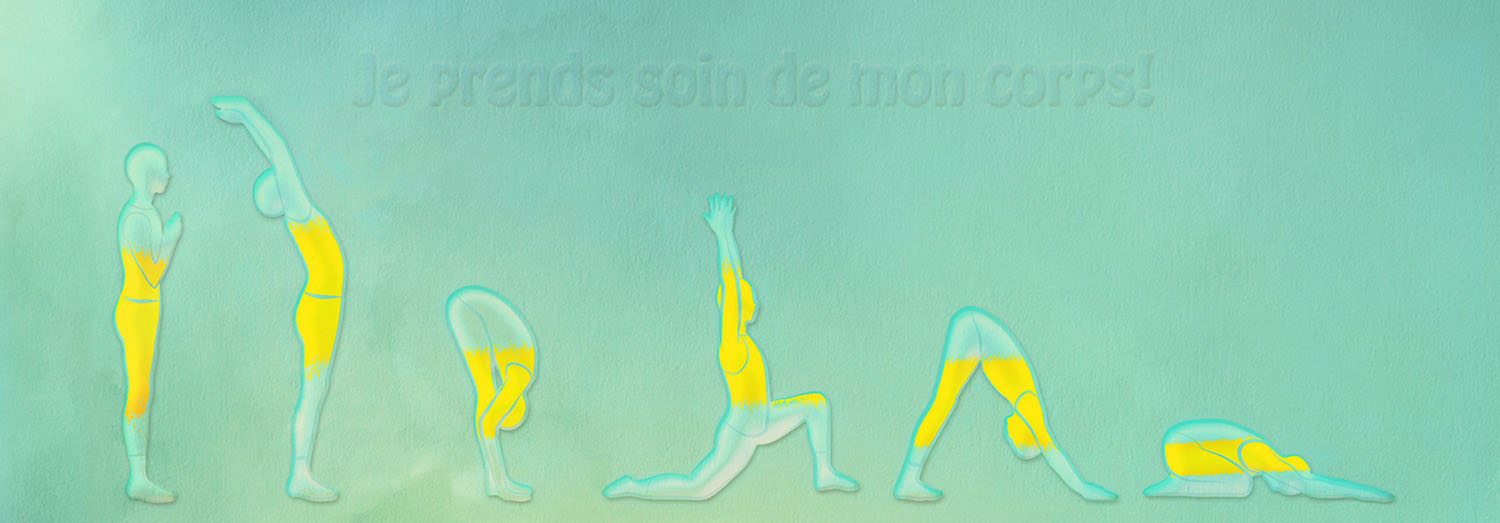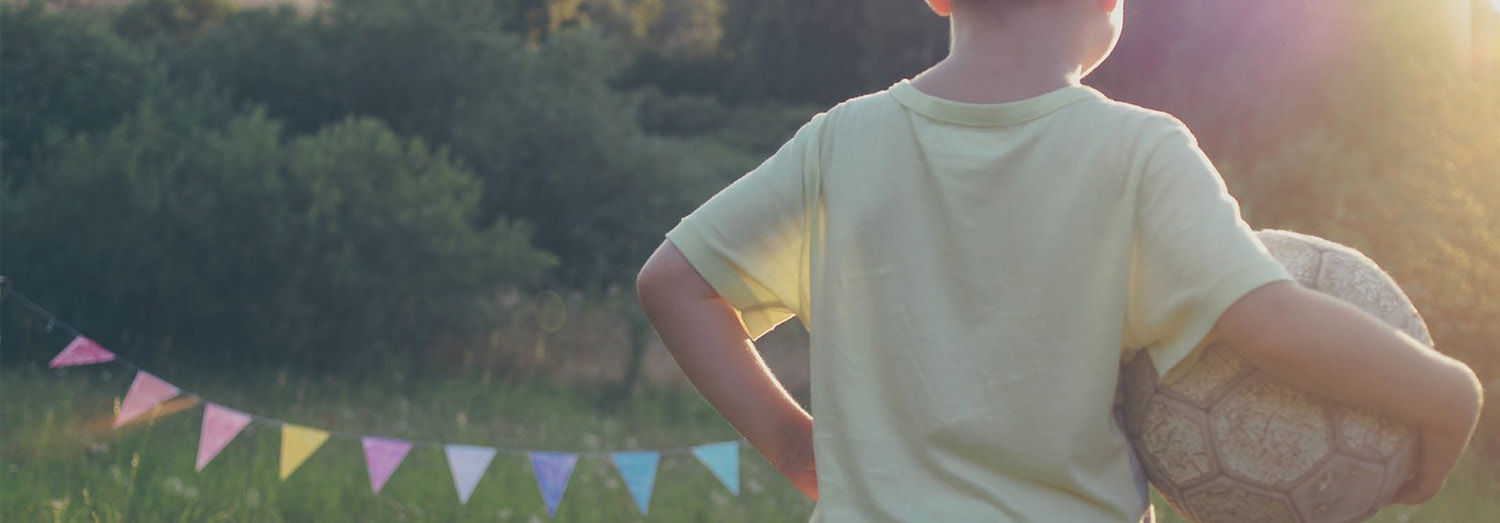Integral Education
A Brief Introduction
Integral education is an open and complete system that can also be adapted to all children, according to their personality and their needs. It covers in a coherent and subtle way all the physical, emotional, mental and inner aspects of a child’s development, through:
- daily physical activities and the mastery of one’s body and its functions;
- the development of the senses;
- the mastery of one’s character, the blossoming of core human values (courage, sincerity, goodness, nobility, etc.) as well as the intrinsic strengths of the child;
- the development of the ethical and the aesthetic sense
- the methodical refinement of the mental faculties (observation, concentration, memorization, imagination, reasoning, etc.);
- self-awareness.
All this offers the child a profound psychological knowledge of self, but also brings him to discover what makes him a unique being. He will develop self-mastery and the capacity to blossom while being at the service of people around him and nature. He will be able to keep enthusiasm, curiosity and the thirst for progress and perfection alive within himself throughout his life.
For many years, Fabrice Dini studied the Integral approach proposed by the Indian poet, yogi and philosopher Sri Aurobindo and implemented by his spiritual collaborator Mirra Alfassa. This book is directly inspired by their writings on the subject.
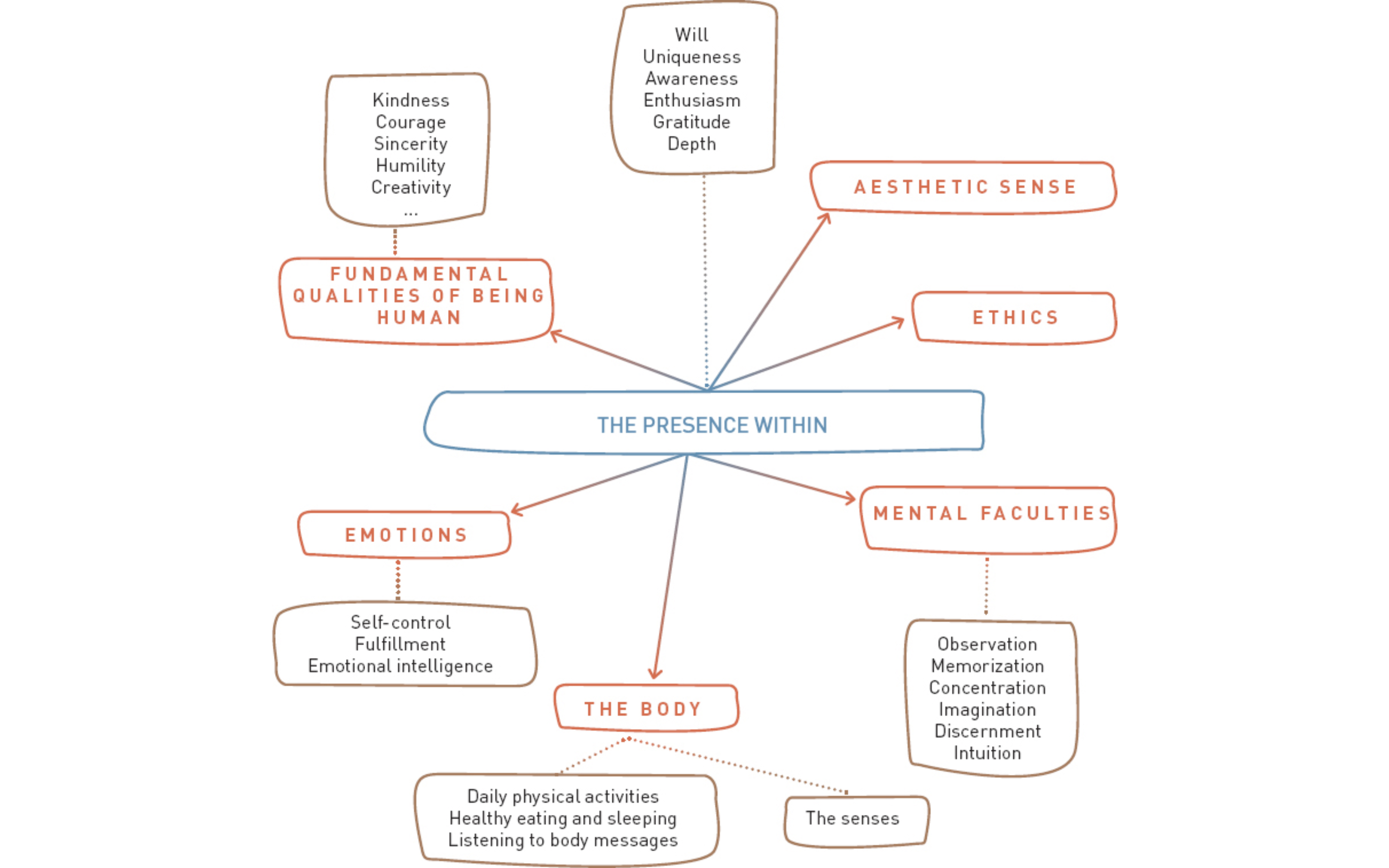
Fabrice invites you to discover the vast and solid foundations of this system as well as its practical applications. An education where the child is the main actor of his own development, which will lead him to discover and master himself as well as blossom while harmonizing all aspects of his personality with what is noblest, truest and best within himself. The adult, subtle and full of benevolence and clarity, will assist the child in this discovery while being himself constantly evolving too. He will encourage the child to know and assert himself and to progress, so that later he can find his true place in the world and thus offer the best of himself to society and nature, thus taking part in creating the world of tomorrow.
Physical education:
- One hour of daily physical activity – to cultivate flexibility, strength, agility, endurance, grace and to strengthen the character.
- Learn to listen to one’s body, its messages and its needs.
- A healthy lifestyle – various activities and postures, time of assimilation and rest, food, sleep.
- Cultivate sharp senses – train the scientist’s precision and the artist’s sensitivity.
Vital education (emotional):
- Develop emotional intelligence: become aware of emotions, reactions and impulses; to know and master oneself, and to flourish.
- Awaken the aesthetic sense – to express beauty and excellence through movements, emotions, thoughts and actions.
- Cultivate fundamental qualities of being human: the holistic human development is dependent upon fundamental qualities of being human, such as courage, sincerity, kindness, love of learning, solidarity.
- Develop a powerful will, at the service of what is noblest and highest.
Mental education:
- Develop mental faculties in a methodical and interesting way – observation, comparison, concentration, memorization, imagination, reason, intuition.
- Learn to communicate, express emotions and needs, and understand others.
- Develop ethics as well as integrity. Cultivate self-discipline.
- Train discernment – choose what is healthy and harmonious.
- Develop a lively, subtle and intuitive intelligence.
The Presence within :
- Cultivate what makes everyone a unique being with unique qualities. • Encourage self-awareness.
- Promote the depth of being and elevation, simplicity and aspiration.
- Cultivate enthusiasm, gratitude and wisdom.
- Encourage a noble and healthy aim in life – corresponding to the intrinsic nature of each – in the service of those around us, of nature and of the future.
- Foster aspiration for the good, the beautiful, the true.
The adults’ role:
- Be – teaching through example.
- Become – moving at one’s own pace towards one’s culmination (in order to serve others and the Earth).
- Continue to discover the infinite riches of life.
- Provide children with a balance between freedom and discipline.
- Be a friend, a sage, a safe guide.
A secret to happiness !
Learn more! Click to read about gratitude and find exercises you can follow.
Let nature do the teaching!
Click to read about how nature is infinite in its richness, its creativity and its generosity.
The Body
Our body is the prodigious outcome of more than 13 billion years of evolution.
This marvel of incredible complexity, with infinite potential and on which our lives depend, deserves all our attention and our solicitude. It is vital to offer daily physical activities to all children and to encourage them to listen to their bodies; we can explore the proper role of food and the subtle balance between action and assimilation, between effort and letting go. Breathing and contact with nature are also precious allies to systematically cultivate a healthy, strong, agile and enduring body in all children, thus providing them with a balanced and solid foundation for life.
Scientific studies
In 2016, 39% of the world’s population was overweight and about 13% was obese. It seems that inactivity is responsible for 10% of deaths in the world.
To remedy this situation, the World Health Organization (WHO) recommends one hour of physical activity daily for all children.
According to the WHO, appropriate physical activity helps young people develop healthy musculoskeletal (bones, muscles and joints) and cardiovascular (heart and lungs) systems, improve neuromuscular awareness (coordination and movement control), and maintain fitness weight.
It has been proven that physical activity not only brings many psychological benefits (notably a good antidote to symptoms of anxiety and depression), but it also contributes to the social development of youth: self-expression, social interaction, integration and self-confidence building. It also appears that young people who engage in physical activities adopt healthy behaviors (such as avoiding tobacco, alcohol and drugs) more readily and achieve better academic performances.
Physical activities are also an opportunity to develop many qualities such as determination, discipline, teamwork, equanimity, courage, concentration, dexterity, willingness, good spirit, self-control, etc.
Exercises
Listening to one’s body Close your eyes and observe your body: how does it feel (tense, tired, nervous)? Become aware of your position. Adopt a comfortable and upright position. How do you feel now? Scan your body from the top of the head to the tips of the toes and observe with kindness the different sensations that you feel. Is there a body part that you feel more strongly? Do you feel a pulsation, a tension, a heaviness, a tickling? If this is the case, take three breaths at the location of the sensation. Are there body parts that you do not feel? If your body could express its needs, what would it ask for? Does your body need anything? If we wish to devote more time to it, it is possible to continue like this: focus your attention on your head, feel your forehead and eyes, how does your jaw feel? Is it relaxed or tense? Relax it. Sense your neck and shoulders; relax your shoulders. Feel the air that inflates and deflates your chest, try to feel your heart beating. Concentrate now on your belly; how does it feel? Is it knotted, is it empty, does it make noises? Now concentrate on the pelvic area, then on your back. How are your legs? Calm or restless? Feel your ankles, the soles of your feet, and then move your toes, stretch gently. It is also possible, when there is a body sensation, to simply remain present with this sensation, to observe its evolution as well as the emotions, thoughts and images that arise during the exercise.
Settle down in a quiet place where you will not be disturbed for a few minutes. Sit in a comfortable and upright position to explore these audio tracks.
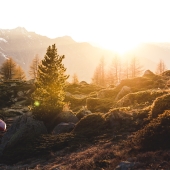
The Senses
We can train the precision and knowledge of the scientist and the sensitivity and creativity of the artist.
We can accompany children in their sensory development so that they acquire both the precision and knowledge of the scientist and the sensitivity and creativity of the artist. When the artist is looking at a face, it is the testimony of a lifetime that she/he discovers, as if every event and emotion had left an impression on its way. When a bird is singing, the composer or poet perceives a luminous symphony, a crystalline flash that breaks the silence; when the painter observes a field of sunflowers, it is like a field of fire ablaze before her/his eyes, as if the Sun in all its splendor was burning in the meadows. Why leave all these joys to the artist or the poet alone?
Scientific Studies
Numerous studies have shown that sensory development has decisive impacts on many other areas of the child’s development. Thus, stimulation of the sense of touch would help children to integrate abstract ideas in a concrete and experiential way. Indeed, based on various studies carried out over 15 years, Cabrera and Cotosi discovered that hands-on exploration contributes not only to understanding abstract concepts but also to four mental faculties essential to learning: making distinctions, recognizing relationships, organizing systems, and taking on several perspectives.
Exploration contributes not only to understanding abstract concepts but also to four mental faculties essential to learning.
Exercises
To develop one’s sense of taste and smell: During a meal, prompt them to pay attention to the smells of the different foods, to learn the names of the various condiments and ingredients, the textures of different cheeses, etc., then blindfold their eyes during the next meal and ask them to guess what’s on the menu. To broaden their ability to appreciate different flavors, let them discover and appreciate the tang of pepper, ginger or chili; the astringency of tea, blueberries or sea buckthorn berries; the bitterness of grapefruit or chicory, etc. Let them discover the peppery and sweet juniper berries that look woody and resinous; the slightly camphorated and sweetened fennel seeds that resemble anise, and whose taste gradually rises in the mouth, leaving a stable and refined sweetness on the palate; explore local or exotic fruits; discern spices that account for the richness of many merchants, such as cinnamon, saffron, mustard seeds, cardamom, ginger, clove and turmeric. This can also be an opportunity to introduce subjects such as history and geography.
Nature Pedagogy
To learn in order to know, to study in order to have the knowledge of the secrets of Nature and of life, to educate oneself in order to increase one’s consciousness, to discipline oneself in order to be master of oneself, to overcome one’s weakness, one’s incapacity and ignorance, to prepare oneself in order to progress in life towards a goal that is nobler and vaster, more generous and more true. Mirra Alfassa
Nature is infinite in its richness, its creativity and its generosity. It has always inspired artists, scientists, writers, great designers, athletes, farmers… All of them draw from its genius, its inexhaustible source of wealth and well-being. From infinite details to its immeasurable grandeur, it can and makes everything possible: does it not make oceans float in the sky? Nature is also a precious ally for teachers: its beauty, the richness of its fauna and flora, the infinity of its forms, the gamut of colors and scents, its incessant evolution, its purity and abundance, the mystical dance of seasons; all these facets make it the ideal place to know, discover and study the world. What teacher can offer such a range of experiences, sensory delights, objects and phenomena in class?
Nature offers ideal conditions for experiential and dynamic learning, with enthusiasm and wonder. It is perfect to cultivate the body: motor skills, agility, dexterity, coordination; foster the senses and the aesthetic sense; develop and strengthen fundamental human values such as perseverance, courage, humility, gratitude; and also the strengths of character such as endurance, leadership, teamwork, prudence, self-mastery. Outdoor pedagogy is also ideal for training mental faculties such as observation, comparison, concentration, memorization, etc. All subjects can be taught in nature: mathematics (discovering the shape, weight and size of objects, classifying pieces of wood, counting), languages (vocabulary, poetry), communication (collaboration, writing), geography, science, history, etc.
Schools that are partially in nature have been the subject of much research; the latter has demonstrated that children better develop their motor skills, have heightened concentration abilities and more creativity, are ill less often and less long; they have a better emotional balance, learn to play together, help one another more and have fewer conflicts among them. As many teachers who go out into nature with their classes have noticed, children that are “more difficult to manage in class” become sometimes less troublesome once in nature and even demonstrate unsuspected qualities. Hyperactivity as well as many other modern diseases are attenuated in nature, when they do not simply disappear. As a result, the relationship with the Earth is also positively transformed – we better protect what we love.

Exercises for Learning through Nature
With enthusiasm and perseverance, like an explorer or a scientist, such as Darwin or Rousseau, study birds’ songs, animals’ tracks, flowers, trees, rocks, clouds, etc.
We will begin by cultivating their sense of observation: how many colors does this bird have and where? At what time of the day or year does it sing? How is its beak, how are its legs and wings? How does it fly? Does it have different songs? Does it live in a flock or alone? At what time does it get up and go to sleep? The second step is comparison: we will study another bird and note the differences. We can draw the bird, study its nest, write what we know about it, make an oral presentation, write a poem, play with numbers: how much does it weigh, how does it rise so high in the sky, how much does it eat every day? We can research this bird, study it (book, applications, Internet) and see if our observations correspond to the knowledge of ornithologists.
It is not a matter of learning things by heart but of discovering them through experience.
- Finding a tree in the forest: go into a forest and blindfold the child; take his hand and lead him to a tree (by making detours); let him get to know this tree, then bring him back to the starting point (by making some more detours). Remove the blindfold and ask him to find his tree.
- In your living space or during a stroll in the forest, ask the children to find the widest possible range of different odors in a given time (10 minutes, for example). Invite them to formulate what each smell evokes for them (an image, music, etc.).
- With his eyes blindfolded, give the child a shell, a pebble or a leaf; let him explore this object, then put it among other objects and ask him to find it again.
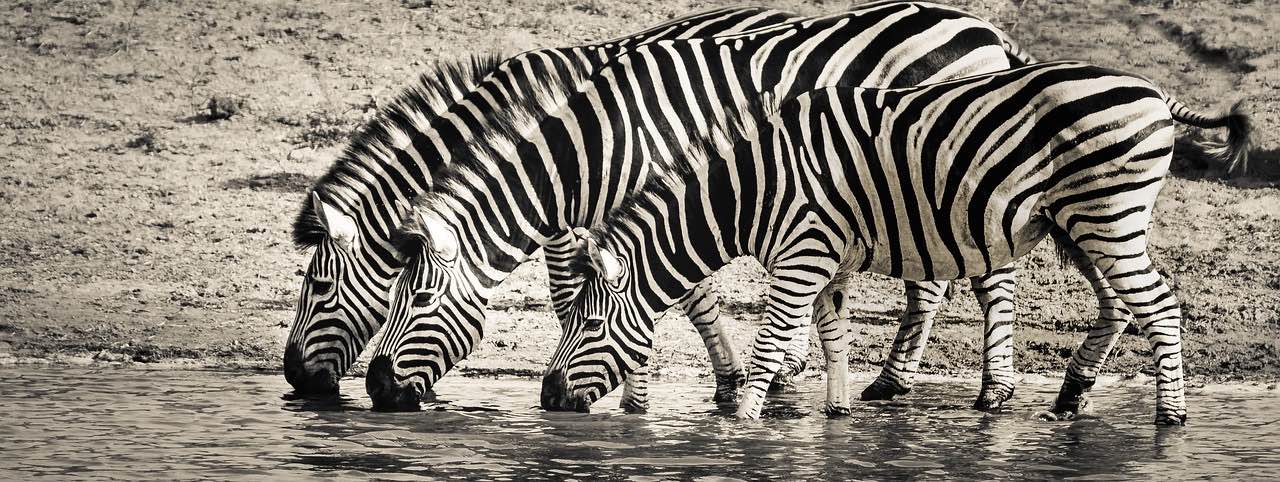
Emotional Intelligence
77% of European recruiters favor emotionally intelligent candidates rather than those with many diplomas.
Emotions color our lives with their many colors; they are “the colors of the world”, sometimes luminous or dark, sometimes bright or deep. They influence our perception of circumstances and are fundamental to the relationship with our children, family and colleagues, but also to our connection to nature, other nations and cultures. They are often sources of conflict, hardship and suffering; but they are also the vibrant expression of the heart, of deeper feelings like friendship, love and compassion.
What is emotional intelligence?
Emotional intelligence refers to “the ability to perceive and express emotion, assimilate emotion in thought, understand and reason with emotion, and regulate emotion in the self and others”. We can see that the world is evolving rapidly; emotional maturity and personal development are becoming a priority for many, because which changes (social, ecological, political or economic) can profoundly improve the human condition if there is no prior transformation of the individual? Even at the professional level, it appears in many surveys that more than three-quarters of recruiters favor emotionally intelligent candidates rather than those with many diplomas. Emotional intelligence is now considered to be just as important as intelligence quotient (IQ).
Exercises
A prerequisite for progress is self-knowledge: becoming aware of our emotions, thoughts, reactions, strengths and weaknesses, but also of this presence that moves us – our profound essence. This awareness is progressive; the adult, to encourage it in the child, can simply give him a mirror, get him used to taking his “inner weather”, observing himself, turning his gaze inwards. The child will be lead to discover the warning signs of a storm, the causes or circumstances that provoke it, its effects on his body, behavior, thoughts and emotions.
Sit comfortably and take a few moments to observe your inner weather: how do you feel physically (tension, relaxation, etc.), emotionally (sad, agitated, etc.) and mentally (many or few thoughts, etc.)? Simply take note of these feelings. Now, breathing through the nose if possible, feel your diaphragm come down and swell the abdomen while inhaling; while exhaling, the air exits through the nostrils and the diaphragm rises. For this breathing to be even deeper, you can feel the region from your lower abdomen up to the pubis also rise and fall to the rhythm of your breathing. Now return to your inner weather and observe physical, emotional and mental changes.
Character Strengths
For several years in positive psychology, character strengths have been studied with the aim of classifying the positive traits of the human being. Martin Seligman and Christopher Peterson have established a reference framework for these strengths, proposing a classification of 24 strengths of character that are constantly cited across different cultures, grouped under 6 virtues. The listed strengths are universal. This classification aims to promote the identification of the individual’s resources, allowing him to achieve well-being.
After handing over the questionnaire, we obtain a ranking of our main strengths. The first 5 are what the authors call the individual’s “signature”. According to the approach proposed by positive psychology, making use of these personal forces – especially those which constitute the signature – is a source of progress and well-being. Like the child who loves to walk and run once she or he has learned this skill, we enjoy doing activities in which our abilities, skills and talents are used, throughout our lives.
Several programs for schools have been established on this basis so that students can discover and develop their intrinsic strengths of character and increase their resilience as well as the frequency of positive emotions. Studies have shown that students who followed these programs had an increased curiosity, creativity and social fiber (empathy, cooperation, self-control, insurance); they had also developed a passion for learning, commitment and pleasure to be in school; depression and anxiety were reduced while academic performance improved as well.
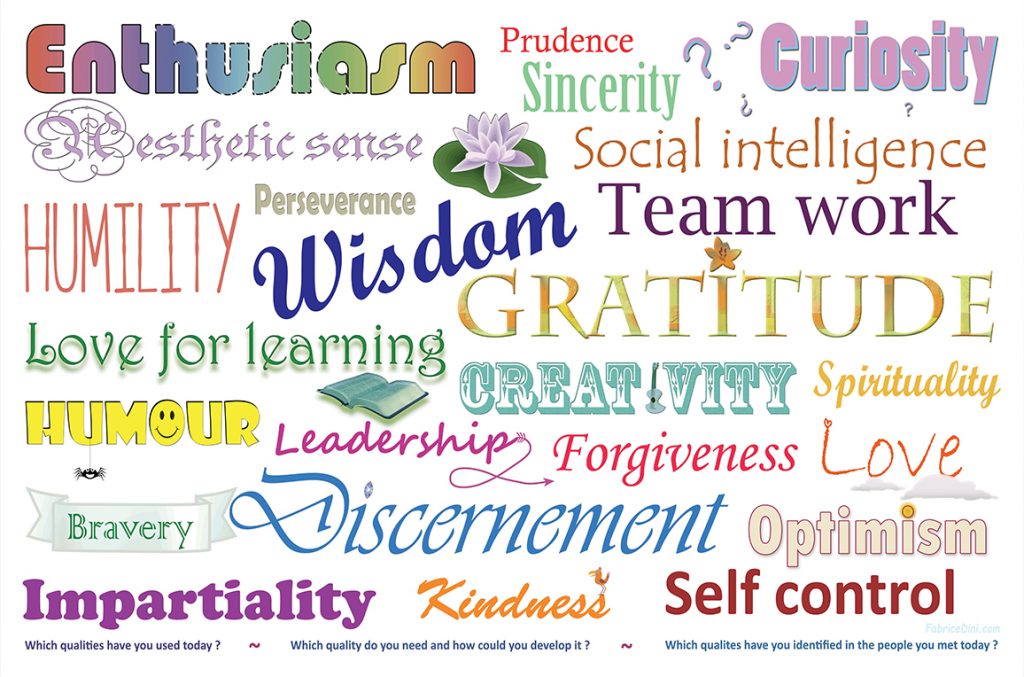
Download Poster Size
Exploring a strength of character
What is your definition of this strength? Make a list of the situations or circumstances (with whom, when) in which it is present. Does it bring you anything? How do you feel when it is present (physically, emotionally, in your head)?
Strategies for developing character strengths
Think of seven new ways to use one of your strengths (in the daily, professional, social, and sentimental aspects of your life; to make classes more interesting in school, with regard to the relationship with your parents, brother or sister, and friends, during your free time or when doing sports). Example of curiosity: deepen my knowledge of a theme that I am passionate about by reading books, specialized journals, doing research on the Internet, watching a documentary; observe the architecture of buildings on the way to school; try to understand my brother’s character; observe fluctuations in my mood during the day; take courses on a subject I do not know; regularly spend time with people from a different culture to discover their culture’s richness; explore the fauna and flora of the forest at least one hour a week.
Managing difficult situations with our strengths of character
Think of a recent and somewhat difficult situation. Review each of your 5 principal core strengths and explore how they can help you deal with the situation better; find one or more strategies. For example, if one of my strengths is humor and I have tensions with someone, I can break the ice with humor to relax the atmosphere and establish some complicity. If it always takes ten minutes to make teams during recess, I can use my quality of leadership to speed it up. You will find many other exercises to cultivate the strengths of character in the book.

Fundamental Qualities of Being Human
Each child has the potential to flourish while offering the world the best in her/him, and becoming an enlightened, supportive, caring, and dynamic human being, thus contributing to the well-being of all and to the construction of a bright future. It is up to each of us and each nation to provide an ideal basis and fertile ground for these fundamental human values to flourish in every child’s heart. Splendid fires illuminate the long ascent of humankind towards bliss and unity. They give a profound meaning to life, illuminate the semi-conscious night with a supreme momentum and lift us beyond mediocrity and barbarism. These universal fires are the fundamental qualities of being human, of which you will find a selection here:
Sincerity – Humility – Gratitude
Perseverance – Goodness – Aspiration
Receptivity – Progress – Courage
Generosity – Equality – Peace
Let us cultivate these jewels so that they shine in our hearts and serve as a beacon when the storm rages, so that they fill our lives with a new light. Then encourage the children to cultivate them, so that they too walk this Earth with a generous and harmonious step.
Scientific studies
From the point of view of scientific studies, the University of Newcastle in Australia has studied the impact of teaching fundamental human values in more than twenty schools. Numerous beneficial effects have been observed: the students are more applied, honest and respectful; they take responsibility for their studies and cooperate better; they are kinder and integrate isolated children more easily. In these schools, teachers offer more choices to the students, listen to them more attentively, encourage them to manage their own conflicts; thus, students feel that they are treated more fairly and, on their side, are more respectful and courteous towards the teachers; a better atmosphere prevails in these schools, and relations between teachers and students are better; this all results in an improved well-being for all, and parents feel more engaged.
Exercise
Cultivating a fundamental human quality
The following questions can serve as a guideline to help the child deepen his knowledge about one of the twelve basic human qualities mentioned above:
- What is your definition of this quality?
- When did you use it for the last time?
- How do you feel when this quality is present within you? Do you perceive differences in your posture or in your facial expressions? What body sensations can you perceive? What thoughts present themselves when you feel that quality?
- How important is this quality to you, and why? What are the benefits and advantages of this quality?
- Is this quality within you right now? If so, when and how does it manifest itself?
- What strategies could you develop to use it more?
- Under what circumstances in your life would it be especially judicious to use this quality?
- Could this quality have helped you on some occasions? If so, list the opportunities and the way you could have used it.
- What would be the advantage of having this quality present all the time or of being able to use it at will? What impact could this have on your life, both in the short and long term? What difference would it make on your entourage and on your action in the world?
Cultivating Gratitude
Gratitude is the secret to life. The greatest thing is to give thanks for everything. He who has learned this knows what it means to live. He was penetrated the whole mystery of life: giving thanks for everything.
Albert Schweitzer, Nobel Laureate in Peace
Gratitude is a feeling of gratefulness, thankfulness and joy in response to a received blessing or service – whether this gift is a tangible advantage received from someone or a moment of peaceful bliss evoked by natural beauty. Feeling gratitude means wanting to say “thank you” to someone or something (person, nature, animal, object, circumstance).
To Stir up the Embers
- Deepening the intensity of the gratitude experienced when it presents itself spontaneously: by giving it attention and value, and by simply remaining with it, like sharing a moment with a dear friend.
- Increasing the frequency of moments of gratitude: by being more awake to the slightest signs of its presence, by listening to its micromovements within us and by seeking it as we look for treasure.
- Widening the gamut of things that awaken gratitude. We can feel gratitude towards many aspects of life: people, nature, objects, situations or simple things (such as having food or hot water), kindness, luck, beauty, etc.
- Extending the density of gratitude. For a same occurrence, we can broaden and increase the density of its spectrum. For example, while hiking in the Alps, I feel grateful to my husband who is taking care of the children, to the people who are with me during the hike, to the beauty of nature (flowers, mountains, rocks, trees, moss, rivers, etc.), to all those who feed and host us along the way, etc.
Exercises to Cultivate Gratitude
- What went well. Over the next two weeks, take a moment every day to write down three things that went well during the day. These three things do not need to be very important; it can be at school, with friends or family. For example: “I answered correctly in Geography class” or “My friend invited me to her birthday, I’m so excited! “. Here are some ways to help the children: What moments were pleasant for you today? What beautiful things did you see (a flower, a tree, a dog, a painting, a child’s smile, a piece of music, etc.)? What actions made you feel proud? What friends did you meet? When did you laugh or smile? What difficulty did you solve, etc.? This exercise has been carried out in many schools, with excellent results.2
If you wish, you can write a thought alongside the positive events, drawing inspiration from one of the following three questions: Why did this good thing happen? What does this mean for me? What can I do to make this event happen again in the future?
- Regularly take time to share with the children things that went well during the day or the past week. Establish a ritual, alone, with family or at school, to celebrate the things for which you are grateful. For example:
- Before a meal, the whole family settles down and each member briefly recounts one or more things that went well or for which they feel grateful.
- On Monday morning, during the first class, everyone shares a thing that went well for her/him during the weekend.
- Every night, when you go to bed, go over your day and see the things for which you are grateful; count blessings rather than sheep!
- How could you show your solicitude to your family and friends in a creative manner?
- Looking back over the last few years, who were the people whose influence was particularly positive?
You will find more exercises to develop gratitude in Fabrice Dini’s book.
The Benefits of Gratitude
Robert A. Emmons – Professor of Psychology world-renowned for his expertise in research on gratitude – has followed thousands of people of all ages and has highlighted the many benefits of gratitude through numerous studies. This research demonstrates that people who are grateful are more supportive, generous, and compassionate; they are more likely to forgive, come closer to others more easily and feel less lonely and isolated. On the physical level, there is a strengthening of the immune system, better tolerance to pain, lower blood pressure, a tendency to do more sports and to take better care of their health. People who feel gratitude also have more positive emotions, feel more alert, alive and awake, are more optimistic and happy and experience more joy and pleasure.
Jeffrey J. Froh, a school psychologist and American researcher specializing in the field of positive psychology in children and adolescents, has developed interventions to promote gratitude in schools. Studies on these interventions show a decrease in negative emotions and their physical symptoms, an increase in positive emotions and optimism among students. Students also feel more satisfied with school and life in general.
- Emmons, R. (2010). Thanks! How the New Science of Gratitude Can Make You Happier.Houghton Mifflin Harcourt.
- Froh J. J., Sefick, W. J., & Emmons, R. A. (2008). Counting blessings in early adolescents: An experimental study of gratitude and subjective well-being. Journal of School Psychology, 46, 213-233.3.
Aesthetic Sense
Beauty
the whole world,
enriched by its presence
becomes deeper, luminous.
What is the aesthetic sense?
Beauty illuminates everything it touches, it has crept everywhere: in the charm of the creek springing through the undergrowth, the freshness of a dew-beaded flower, the cheerful laughter of a child, the aerial splendor of Mozart’s symphonies, the gentleness of a tender gesture, the felted patter of a bird’s flight.
Wherever beauty slips in, whether in art or nature, in emotions, thoughts or actions, from the butterfly to the distant galaxies, everything lights up in its wake. The sensitive soul sees it everywhere; it basks in this beauty and thus fills its whole being with a secret splendor.
Beauty nourishes – and doesn’t nourishing oneself with beauty fill us with beauty too? It inspires, heals, illuminates, makes happiness flow into our lives like a nurturing river. Great humans have befriended beauty; and don’t the wounded, who have taken refuge in its arms, heal faster? It is not a mere ornament or decoration, it is indispensable to our well-being; it adds a dimension to everything it touches; it ennobles everything: our actions, emotions, thoughts, places of life.
Scientific studies
The power of beauty
Neuroscientists of seven American universities have shown that participating in artistic activities (dance, music, theater, visual art) is connected to:
- Improved cognitive abilities: strengthening of memory, reading and writing skills, creative thinking.
- Increased involvement of students in their education as well as in the community and in pro-social activities
- It also has a positive impact on social parameters, including increased involvement of students in their general education as well as in the community and in pro-social activities.
Finally, an analysis of more than two hundred high schools shows that those placing more emphasis on art have higher graduation rates :
more art = higher graduation rates
A man who has a developed aesthetic sense lives, works and loves better; he who has made beauty his companion has more luminous ideas. It raises awareness and turns us away from ugliness. Is it not more difficult to wallow in the primitive mud when one has experienced beauty’s luminous splendors? The adult, while developing this ability in himself, will stimulate the children to discover and express beauty and excellence; beauty in nature: sounds, shapes, colors, scents; beauty in music, architecture, painting, sculpture, poetry; and in all the human activities through which excellence can be expressed too. This will breathe beauty and perfection into their movements, emotions and thoughts.
Exercise
Take thirty seconds to carefully and peacefully observe the place in which you are: study the play of shadow and light, the different shapes, materials, guess the textures; examine an object for a few seconds then see how it occupies space; look around you with curiosity and attention. Which details or new things have you noticed? Doesn’t everything become beautiful? If you have a work of art, does it come alive? How would your life be if this experience were constant?
Ethical Sense
What are ethics?
Moral rules are intended to indicate how human beings must behave, act and be, among themselves and about what/who surrounds them; Napoleon said that they are the natural complement to laws.
The ethical sense comes from within; it obeys an inner ideal, not an external norm. The action of the ethical man is motived by a call of his being, the necessity of an ideal, the figure of an absolute standard; it is the quest for Good, an effort of the being to grow and transform into the perfect nature.
Scientific studies
According to recent research, it seems that the ethical sense is innate and that it can already be observed in children from the age of three. Some children will know and say that an action is wrong, even if adults around say the opposite. According to the psychologist Jonathan Haidt, ethical sense stems mainly from innate intuitions (“I just know that it’s wrong”), to which is later added a deliberate reasoning resulting from conscious processes. This research shows that the most favorable attitude towards the development of an ethical maturity is to cultivate in the parent-child interaction “a cooperative relationship and a positive mutual link”.
Exercises
Let us regularly encourage the children:
- To turn their gaze inwards, and to listen and follow their feelings, to trust in the guidance coming from within (sense of discomfort after an action or speech; spontaneous impulse to help one’s neighbor; feeling that something is false or “wrong”; feeling that things are not in their proper place and need to adjust a situation; need to apologize for a word, action or mistake; need to seek redress when a feeling of injustice is felt);
- To become aware of emotions (pride, shyness, fear) that prevent knowledge of what is good and fair to manifest in action, and to transcend these limitations by exploring various strategies;
- To discern between intuitions (regarding what must be done or said) and desires, wishes, fears, reflexes and impulses (which sometimes simulate an intuition); to distinguish between needs and whims.
To learn languages, let us study inspiring texts, sacred texts from various traditions (Tao Te Ching, Bhagavad Gita, Dhammapada, etc.), human rights, children’s rights; numerous philosophers and religious people also wrote about ethics. Find inspiration within these texts or movies and organize moments of free reflection, individually or in groups.
Mental Faculties
What are the mental faculties?
At school, teaching is traditionally organized into a series of subjects (English, Geography, History, Mathematics, Science, etc.) and most of the time studying these subjects is devoted to memorizing them: learning the places and dates of battles, the names of rivers and mountains, conjugation, multiplication tables, spelling, French and German vocabulary, etc. We use our memorization ability throughout our schooling (a few hours a day for 11 years or more) and this, in general, without having properly learned how to memorize things! In an integral approach, we will first focus on the development of mental faculties:
Observation, comparison, concentration, judgment, memory, reasoning, imagination, logic and intuition.
Starting from the natural curiosity of the children, their interests, we can bring them to perfect the tools that are necessary to acquire knowledge. Throughout the development and refinement of these faculties, we use classical branches of knowledge, but the emphasis is on the development of faculties, not on the amount of information to be learned or the number of subjects addressed. Once these faculties are developed, the child can devote himself to studying all the subjects with formidable efficacy.
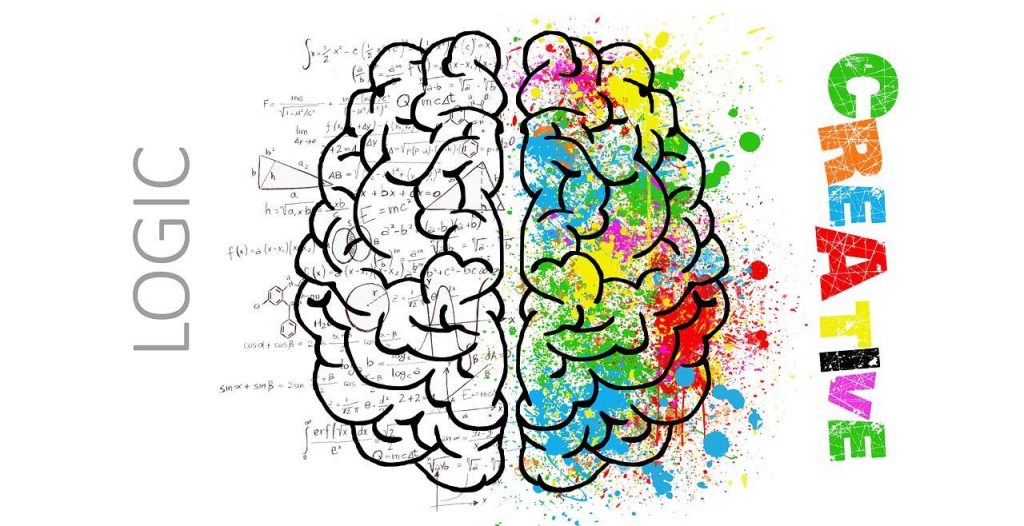
Are they genuises, or beings with superhuman powers?
Lu Chao recited from memory the number pi to its 67,890th decimal place. Boris Konrad memorized 21 names and birth dates in two minutes; Simon Reinhard memorized random words for five minutes, then had ten minutes to recall them, he holds the world record with 124 words; Dominic O’Brien memorized 2,385 random binary digits in thirty minutes. »
Here are the teachers’ comments about young Dominic O’Brien: “He is very slow, when he raises his hand, if he is not questioned at once, he does not remember his question anymore”, “He will never succeed”, “He dreams when he is doing math, he loses the thread of his thoughts”, “He daydreams too much, does not pay enough attention to details”. How many children have been thus discouraged, convinced by adults that they are useless?
One day, Dominic O’Brien decided to improve his memory, and, out of nowhere, without being forced to do it, he modeled one of the most prodigious memories in the world. He was Memory World Champion eight times!
The first condition is therefore to want to learn. Forcing children to learn is absurd and inefficient. The second condition is to make them discover memorization techniques.
Find here one technique, many more in the book of Fabrice Dini…
Exercises
The method of places
The method of loci is one of the most widely used methods of memorization to date. We find the first traces of this technique in Latin writings (Rhetorica ad Herennium) around 85 BC. It helped a speaker quickly memorize a speech. The person first visited a place (church, market, etc.) and followed a predefined route several times, always stopping at the same places. Once the route and stops were memorized, he cut his speech up into parts, each symbolized by a strong image; then, using his imagination, he associated each symbol or image with a stop. Thus, Clemens Mayer – World Memory Champion in 2005 and 2006 – memorized 1,040 numbers in 30 minutes, using a mental pathway with 300 stopping points throughout his home. One can also use public places, a museum or any other building and thus set up several routes. This technique can be used to remember many things: a telephone conversation, the periodic table, a list of things to do, and so on. Create a route in a location you know well with ten steps, for example, when entering your home:
- Entrance door
- Garage
- Utility room
- Staircase
- Living room
- Kitchen
- Corridor
- Office
- Bathroom
- Bedroom
Here are the things I have to remember: take out the trash, change the cat’s litter, phone my insurance agent, reply to an email regarding a trek on Sunday, etc. An example of visualization:
- I arrive at the front door (a humongous trash can with a pink tassel is in front of the door and I have to ask the neighbor for help to move it before being able to enter);
- I go into the garage (the horrible smell of the cat’s litter obliges me to put on a gas mask);
- After that, I go to the utility room (my insurer jumps out from behind the washing machine to discuss my insurance);
- I climb the stairs (I see myself with my trekking shoes climbing to the top of a high mountain in a storm); etc. Your turn now: create your own 10-step journey into your home and choose something you’ve always dreamed of learning, or a list that may be useful to know by heart (for your work, your passion), or for example, the six basic human virtues defined by positive psychology: wisdom, courage, humanity, justice, temperance and transcendence. Put some humor into it, enjoy it!
The Role of the Adult
To give one must have – we can only share what we have, what we are! Thus, if we aspire to offer a better education to our children, we must first care for ourselves; if we want to correct a flaw or give advice, we can start by looking within ourselves to see whether we do not also have this difficulty (perhaps in a disguised form). It is not a question of being perfect and knowing everything, but simply of showing sincerity and humility and being ready to always walk forward and evolve. To do this, it is imperative to offer oneself quality time, to dedicate a moment to refocus every day, to reconnect to one’s values and cultivate them, to be and live more anchored.
The adult can invite healthy habits in the children: to go out into nature, play music, do theater, paint, do sport, dance; learn, understand, progress, do things with all one’s heart, and so on; she can explore with the child what she is passionate about and offer him the opportunity to blossom while learning the rules necessary for collective life and discipline.
Scientific studies
Robert Rosenthal and Lenore Jacobson studied this phenomenon; to explore their theory, they made teachers believe that some of their students (randomly selected) were particularly smart. They noticed that the teachers then became more pleasant and enthusiastic with these students in particular. A few months later, the latter not only had higher scores but there was also an increase in their intelligence quotient (IQ). Therefore, the very fact of believing in a child and his possibilities has enormous repercussions on his future. The solicitude of teachers can thus go so far as to significantly improve the IQ of the students.
A blood thirsty monster in the living room
It is estimated that a French viewer is exposed to 2,600 murders and 13,000 violent acts per year. Psychologists Dimitri Christakis and Frederic Zimmerman highlighted that the harmful effects of television persist for a long time, since one hour of violent programs per day quadruples the probability of observing behavioral problems in children during the following five years. In youth programs, there are 14 scenes of violence per hour; a study among nine-year-olds shows that the reduction in television hours directly results in a decrease in the level of violence at school.
Absolute freedom, as long as maturity is not acquired, is not possible. The adult, when necessary, will impose rules: going to bed early, sleeping at least eight hours, eating healthily, etc. She or he also has to protect children from watching TV or being on the Internet and using electronics for long periods. Multiple studies show that daily exposure to television creates antisocial behavior, a propensity to become depressed and to overeat, but also that early viewing of television pictures alters the children’s brain formation.
Creating a luminous and healty psychological atmosphere
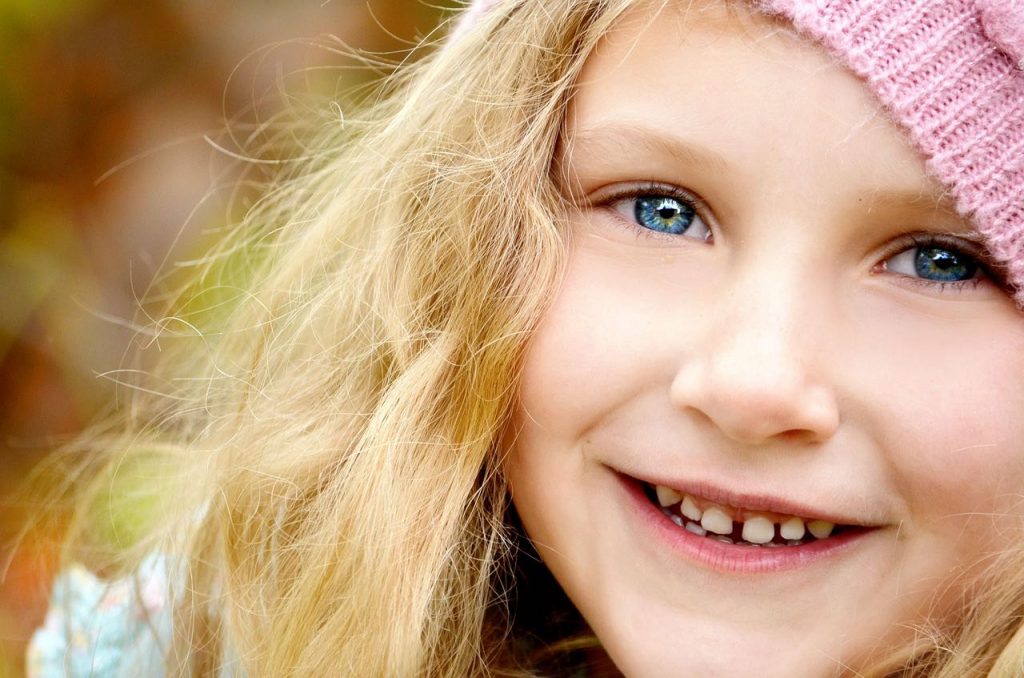
Exercise
See, Touch and Go.
1. See: As soon as you find yourself superficial or inadequate, as soon as there is a tension or a false note, become aware of it. 2. Touch: Stop for a moment, touch your heart and ask yourself: what really matters? 3. Go: Act according to the knowledge and the highest wisdom that you are given to perceive at the moment. This exercise is inspired by Elisha Goldstein.
Moments of sharing
Discussions are very important to develop understanding and maturity; class discussions, in small groups, or with family, in an atmosphere of trust and benevolence. Of course, it is imperative that the child feels completely accepted and safe to be authentic (without any judgment from the adult). The best moments for this sharing are when everything is calm, in moments of symbiosis where each one’s tone is filled with sweetness, openness and love. Let us mirror the reality of the child like a peaceful mountain lake without ripples reflects a rich and glorious scene. Present, open and benevolent, let us ask him questions so that he becomes aware of his sensations, thoughts, feelings and intuitions. With gentleness and subtlety, let us encourage him to explore his strengths and weaknesses; awaken his curiosity, enthusiasm and love of learning, thus fueling the sublime fire of life.
Exercice of solicitude in imagination, page 122 of the book.
Growing up in a physical, emotional and psychological environment that is both healthy and loving has a tremendous impact on our relationship to ourselves and the world. Studies1 show that attitudes favoring this healthy environment (softness, tenderness, soft words, etc.) are associated with the secretion of oxytocin, a hormone that generates confidence and generosity; its presence reduces stress reactivity, solidifies social ties and increases the sense of empathy. At every stage of life, every being needs love, like the plant needs light.
Settle down in a quiet place where you will not be disturbed for a few minutes. Sit in a comfortable and upright position to explore these audio tracks.

